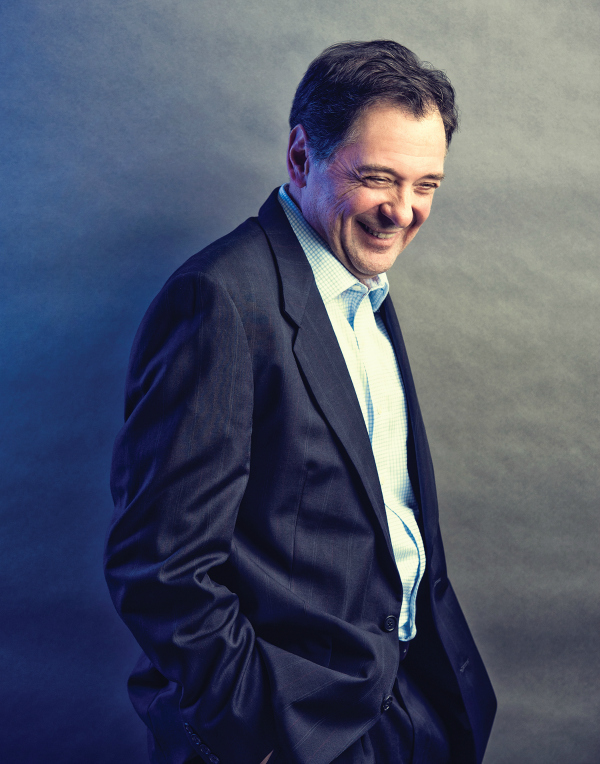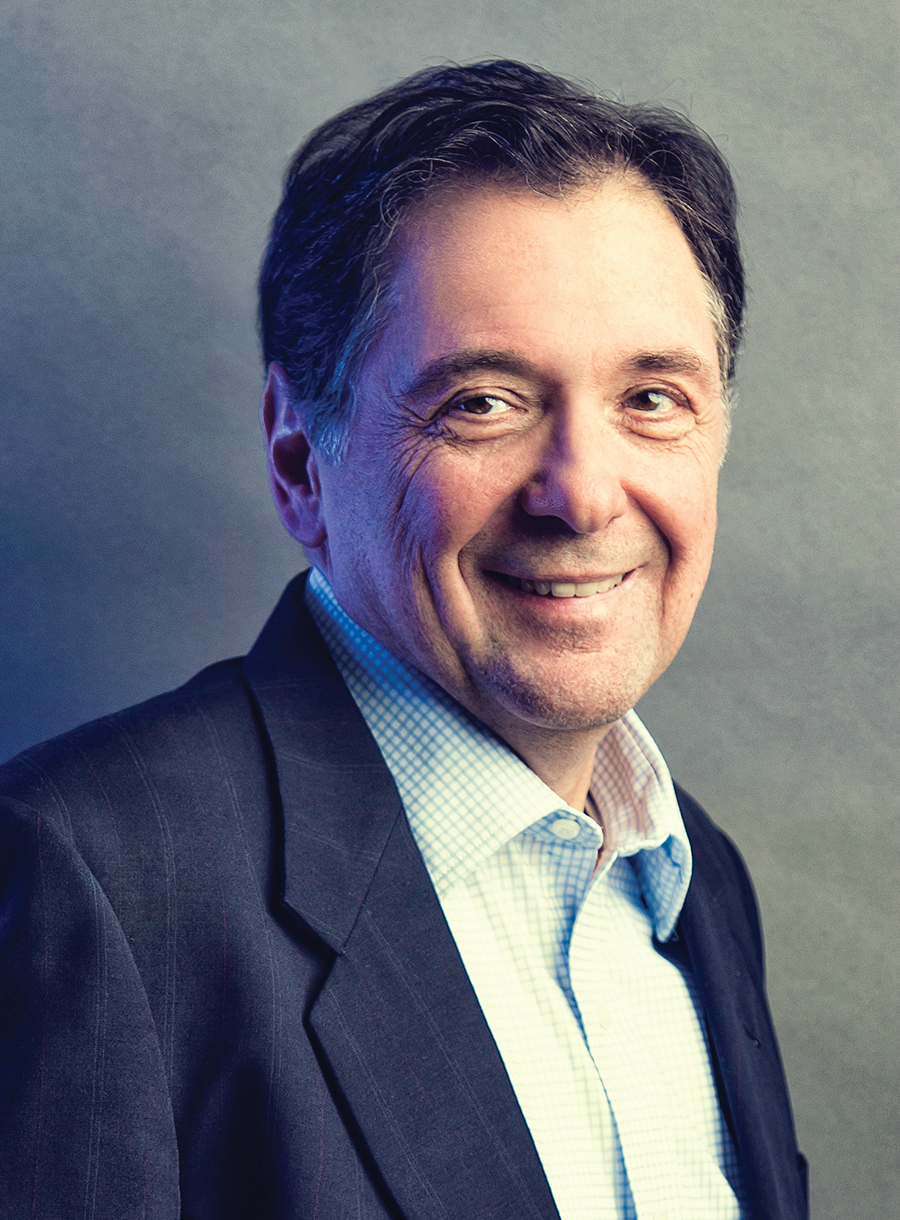Lou Carosa may not work in a glamorous corner of the buyside, but his job is never dull. He doesn’t execute trades at a proprietary shop or lead a high-frequency trading desk with a mission to move the markets, and he would never call himself a quant though the seasoned equity trader has been serving on the buyside for decades. In the last 19 years, he has worked on the wealth management desk of Wachovia and now Wells Fargo after the bank acquired Wachovia in the wake of the 2008 credit crisis. He has seen technology transform the equity trading desk and volatility come and go, and yet he still gets a thrill at executing a trade.

Does his heart race and do the hairs on his arm stand up when he makes a trade even after decades on the desk? “Sometimes yes, it does actually. Yesterday all of the hairs were standing up and even standing up on my desk,” he said with a laugh.
Traders spoke with the 62-year-old head of equity trading at Wells Fargo Wealth Management the day after the Chinese stock markets shut down trading after a pair of steep falls in volume in early January. Carosa was visiting the retail and investment bank’s Charlotte, N.C., offices, which once belonged to Wachovia and are located across the street from rival Bank of America. Carosa worked here before Wells Fargo took over Wachovia. He also remembers days for dark pool, algorithmic trading and the fears of HFTs allegedly gaming the system.
A native of Pittsburgh, Carosa came down to North Carolina in 1997 during the old First Union days. Before that, he traded on the equity desk of Mellon Bank in Pittsburgh, now part of Bank of New York Mellon, where he cut his teeth making trades and learned from his mentors. Between Mellon Bank and Wachovia/Wells Fargo, he traded at Gardner Lewis Asset Management in Chadds Ford, Pa., outside Philadelphia.
“The opportunity presented itself here in Charlotte, and I took advantage of it and moved my family down here in the ’90s,” Carosa said. “I was part of a growing organization here, and everything worked out well all in all.”
Day to Day
Carosa likes to a downplay his role inside Wells Fargo. Although he does execute trades himself, he considers himself to be a working supervisor. “My role isn’t as glamorous as a mutual fund trader like at T. Rowe Price or Fidelity Investments, and it’s definitely not hedge-fund type of work,” he said.
Carosa and his equity trading team help the portfolio managers and financial advisors for the wealth management division of Wells Fargo each trading day. Unlike traders inside an HFT firm, Carosa and his team do not buy stocks only to sell them two seconds later. “Our general rule of thumb is, we do not look to trade repeatedly, rapidly or frequently,” he said. The average trade size is about 400 shares, and this means that his team is inundated with smaller trades throughout the trading day.

“We do have some larger trades, so what we’re always trying to do is add value incrementally,” he explained. “My day is typically to build relationships with parties within the organization because it’s a large one. We have to treat them as our customers.”
The Wells Fargo equity traders have no contact with clients or investors, but occasionally Carosa will speak with the wealth managers to discuss day-to-day market conditions such as the waves of volatility that have shaken the markets since last summer. “The wealth managers take the clients’ wishes, their risk and asset allocation profiles, and they customize these portfolios. They send the equity portions to us, and we try to do the best we can in the time frame when it hits us in the marketplace,” he said.
This doesn’t mean that Carosa won’t make the occasional big trade. When asked if he does not buy, say, a 10,000-block share of Apple, he said that sometimes he does just that. “On average, we have so many trades come across our desk, we’ll do hundreds of trades a day,” he said.
Two of his traders have spent time on both the buyside and sellside, and this allows them to understand the range of issues in the overall market. “They understand the whole gamut of the business. They understand adding value, they understand working commissions and working our universe of brokers,” he said. “They understand that, and they do quite well with that.”
Every few weeks, Carosa travels to the Charlotte offices to liaise with non-trading entities in the wealth management division such as the research and compliance team and client service representatives. “We have also a derivatives strategy that I try to get involved in so I can stay abreast of what’s going on in the marketplace,” he pointed out “Occasionally I’ve got to speak or write about what’s going on in the marketplace. Normally it’s not very trying, but a couple of months have been pretty tough trying to sort it out.”
A New Volatile World
Traders are dealing with a roiling market that is responding to a changing world as China moves from a manufacturing economy to a consumer economy with a growing financial marketplace. Add in the fact that a barrel of oil costs less than the barrel itself and that England may exit the European Union, and you have a recipe for market volatility. This is the same volatility that traders saw at the start of the new year when the stock market dodged, dipped and dived on the news that the Chinese economy was cooling and regulators had deployed a circuit breaker to stop trading after it failed to soothe market participants.

A seasoned veteran, Carosa admits that he has never seen anything quite like this current market. He recalls moments back in 2000 when observers said that oil was cheaper than bottled water, and the subsequent downdrafts in the oil and hydrocarbon business that occurred. Although that did not last very long, Carosa feels that we are in new waters. “This has been a downdraft of epic proportions, and it looks like it’s staying bad and going to stay low for a while,” he said.
When asked if this is the new normal for the coming months, Carosa agreed. “Most traders will tell you that they’re not forecasters. We’re real-time market watchers, and we offer supply/demand analysis. Right now, this looks like it’s going to be with us for quite some time unless something such as a global crisis or open agreement happens, and then things can turn on a dime.,”
Despite the shuddering drops in the market, Carosa says that recent volatility has had little impact on his team thanks to their trading strategy. “We’re pretty vanilla so when an order hits our desk, we don’t try to massage it too much. We try to go into the marketplace, size it up and make a trader decision of how aggressive to be,” he said. “We use the trader’s own discretion about how aggressive to be with the trade, whether the market or that particular sector or that particular security is going your way or against your way.
“In a wealth management world, there is not much to separate a firm to just go to computerized trading,” he added. “We justify our existence by adding value and looking for best execution on every trade. With the volumes that we have over the course of the year, we think we give some value back to the organization.”
As for the tools of the trader’s trade, Carosa and his team use what they need. They have Bloomberg terminals plus screens for equity and options trading. They rely on the Moxy order management system to execute trades, and they communicate via e-mail. When it comes to dark pools, the traders use every available venue for their orders. Anonymity is important, to be sure, and that is why Carosa tracks his broker-dealers and measures their transaction costs. “We favor those who have more positive costs or are more attentive to our type of order flow than not,” he said. Basically, the Wells Fargo wealth management team’s orders are not large enough that high-frequency traders are going to profit off their order flow. “Because the trades are not that sensitive and we’re usually not that aggressive in the marketplace, we’re not afraid of that happening,” he said.
The Buyside Rises
Carosa has had a front-row seat at the slow and steady evolution of the buyside and how it deals with the sellside. When Carosa started out as an equity trader at Wachovia 19 years ago, the rules were set in stone. The sellside provided trading tools, research and liquidity to the buyside in exchange for its business. This relationship went on for decades, and broker-dealers assumed that the buyside was happy. With the advent of electronic trading technology and new tools to measure best execution — no more relying on the assurances of the broker-dealers — and more venues on which to execute trades, the buyside started calling more and more of the shots.
“The buyside can actually leverage its tools now that it has these electronic algorithms. Over the last 12 to 15 years, the number of crossing networks and venues that are available is just overwhelming. You can almost avoid a sellside broker,” Carosa said. “For a while there, when some of these first pools like Liquidnet started out, you were able to just trade peer-to-peer or buyside-to-buyside, which was pretty slick. Now there are a couple of other tools out there that can do that, and they seem to be progressing.
“A lot of these traders will tell you that this is nothing new — there’s the high-touch order and the low-touch order, and they still need the Street to some degree, but with the pools available now the Street is not as important as it used to be,” he added.
Carosa has seen buyside-to-buyside trading since around 2002, thanks to innovations from Liquidnet. He remembers being an early adopter of the new trading apparatus. “At that time, the order flow was chunky and it worked out very well for us. Today, with our order flow it wouldn’t work real well for us. We’re better off with the immediacy of going right into the marketplace and capturing liquidity right into whatever venue we can catch it.”
A Steady Hand
Carosa keeps calm even in the face of market volatility, where a 500-point drop in the Dow Jones Industrial Average is no longer breaking news on CNBC. How does he handle days like last August 24, when the market lost 600 points and people were seeing signs of a crash? He relies on his experience.
“In my time in the business, I worked alongside a lot of people, and some were very emotional and fiery,” he said. “They would get all excited and wound up when they had a day like yesterday [early January 2016] or that day in August. Some of them are very successful, and that’s their personality. I’m a more laid-back, internalized kind of guy. I take it all in. I watch and listen, and I’m just more of a thinker rather than an emotional-outburst kind of guy.”
Carosa had to get back to trading. “I enjoy coming to work and getting involved, getting my hands dirty, and being in the mix of trading and building internal and external relationships. Who doesn’t like to make a good trade once in a while?”



